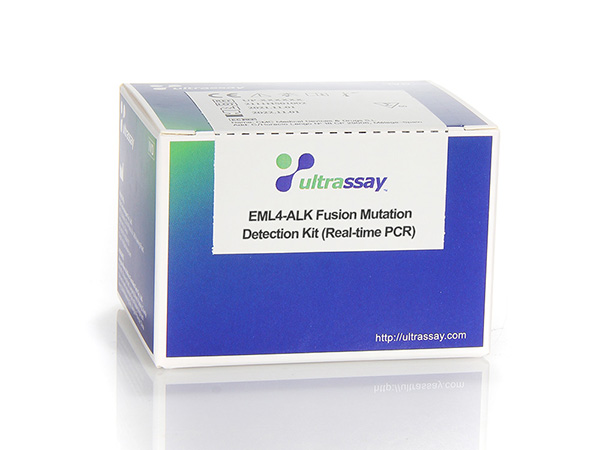Lung cancer is the most common malignant tumor worldwide, of which 80-85% of cases are non-small cell lung cancer (NSCLC). The gene fusion of echinoderm microtubule-associated protein-like 4(EML4) and anaplastic lymphoma kinase (ALK) is a novel target of NSCLC. EML4 and ALK are located in the P21 and P23 bands of human chromosome 2, with about 12.7 million base pairs therebetween [1], At least 20 fusion variants have been discovered so far, among which the 12 fusion mutants in Table 1 are the most common. The most common is mutant 1(E13; A20), followed by mutants 3a and 3b(E6; A20), accounting for 33% and 29% of NSCLC patients with the EML4-ALK fusion gene, respectively[2].ALK inhibitors represented by crizotinib are small-molecule targeted drugs developed for the fusion mutations of ALK gene, which inhibit the activity of ALK tyrosine kinase region and block its downstream abnormal signaling pathway, thereby inhibiting the growth of tumor cells and achieving targeted therapy of tumors [3]. Clinical studies have shown that crizotinib has an effective rate of more than 61% in patients with EML4-ALK fusion mutations, while it has almost no effect on patients with wild-type [4]. Therefore, detection of EML4-ALK fusion mutations is the premise and basis for guiding the use of crizotinib and other ALK inhibitors. This kit is used to guide the use of ALK inhibitors, and provide basis for the individualized medicine of NSCLC patients.
UltraDx EML4-ALK Fusion Mutation Detection Kit uses Taqman fluorescent probe method to design specific primers and probes for fluorescence detection for 12 fusion mutations of EML4-ALK fusion gene and internal reference gene target sequences. The specific probes are labeled with FAM fluorophore (12 fusion mutations) and HEX(VIC) fluorophore (internal reference) at 5′, and labeled with BHQ1 quencher group at 3′. The extracted RNA is reversely transcribed into cDNA. During the PCR amplification, specific primers and probes bind to their respective target sequences. When Taq enzyme encounters the probes bound to the target sequence, it exerts the function of 5’end exonuclease to separate the reporter fluorophore from the quencher group, so that the fluorescence monitoring system can receive the fluorescent signal, that is, every time a DNA strand is amplified, a fluorescent molecule is formed, which realizes the complete synchronization of the accumulation of fluorescent signals and the formation of PCR products. The qualitative detection of 12 fusion mutations in the sample and the detection of internal reference are achieved through PCR-Mix.
The internal reference gene is selected to be the commonly used housekeeping gene β-actin. As a quality control for reagents, RNA quality, and the operation itself, even if the RNA is degraded, the effective amount of RNA in the system can be truly reflected through the internal reference.
Recommended sample types: paraffin-embedded NSCLC tissue samples stored for less than 2 years.
Applied Biosystems™ Real time PCR system 7500, ABI QuantStudio™5 Real-time PCR system, LightCycler® 480 PCR system, Bio-Rad CFX96 real-time PCR instrument. Ultrassay eQ9600 Real Time qPCR System etc.



